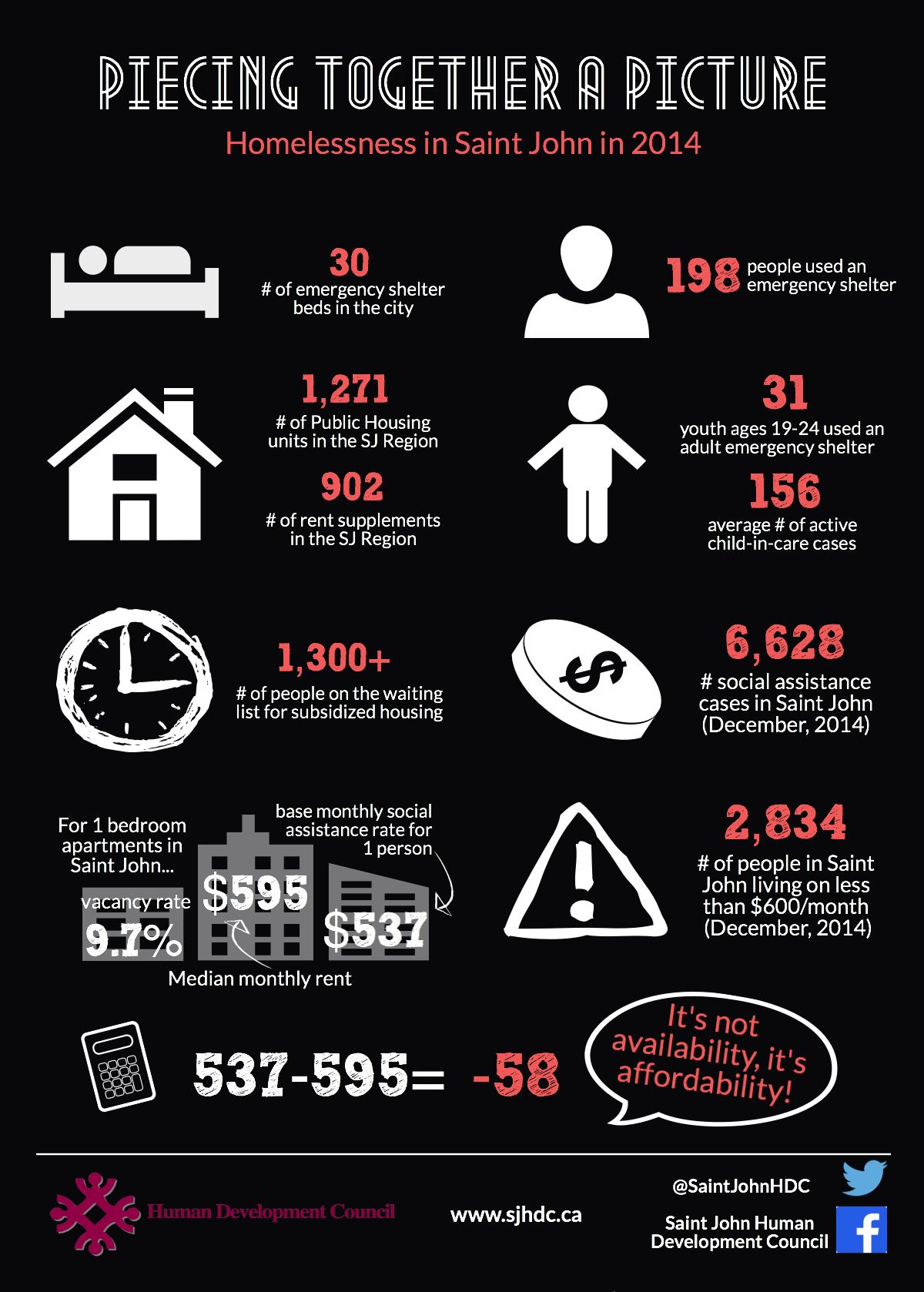Homelessness is a problem faced by municipalities, both urban and rural, across Canada. The below infographic, published by the Saint John Human Development Council, takes a look at state of homelessness in New Brunswick’s largest city.

Shelters are often the primary responses municipalities have to homelessness. The infographic states that the city had 30 emergency shelters beds in 2014, and almost 200 people used an emergency shelter last year. However, providing individuals living in homelessness with a temporary place to stay is only one of several functions that shelters play. Shelters also provide individuals living in homelessness with access to much needed resources, including food, informal counseling, and occasionally even some form of healthcare. Shelters also provide individuals with access to networks that might otherwise be unavailable to them. These networks help connect individuals to services, including educational and employment services. It’s difficult to overstate the critical role that emergency shelters play in helping communities respond to homelessness.
The infographic states that a substantial number of shelter users, 31, were youth aged 19-24. Youth represent one of the most vulnerable subpopulations living in homelessness. Research conducted on youth homelessness has consistently identified family conflict as a key underlying cause in the pathway to youth homelessness. Many youth living in homelessness are fleeing situations of abuse, discrimination, and violence. Living on the streets puts them at increased risk of being a victim to violence. This is especially true for young women and girls.
Local Responses
This March saw the opening of Safe Harbour in Saint John, a community agency that provides emergency and transitional services to youth experiencing homelessness. Stakeholders belonging to the faith community, local governments and local businesses identified the urgent need for emergency and transitional housing for youth experiencing homelessness back in 2011. The opening of Safe Harbour is a direct response to the crisis in youth homelessness in Southern New Brunswick, resulting from the dedicated advocacy and support for such a service by the local community. Considering the gaps that exist in services across the country for youth living in homelessness, it’s encouraging to see developments like these take place.
When confronted with youth homelessness, we have to remind ourselves that these individuals are undergoing development and trying to make the transition from childhood into adulthood. This is an extremely difficult process to undertake when you do not even have a place to call home.
Youth homelessness is distinct from adult homelessness, and services provided to these youth need to be tailored towards their needs. Programs planned with youth in mind look markedly different from a ‘one size fits all’ approach. Providing a continuum of services to youth experiencing homeless is one way of addressing the issue. ONE LIFE (Living Independently For Education), a longer-term housing program in Saint John, places local youth into independent housing provided they are attending school, can help youth get their lives back on track. The need for such programs is great; according to the Safe Harbours website, there is a lengthy waiting list for the One Life program.
Municipalities across Canada share many of the challenges that the city of Saint John, New Brunswick face. Innovation and openness to experiment with housing solutions will play an important role in ending youth homelessness.

